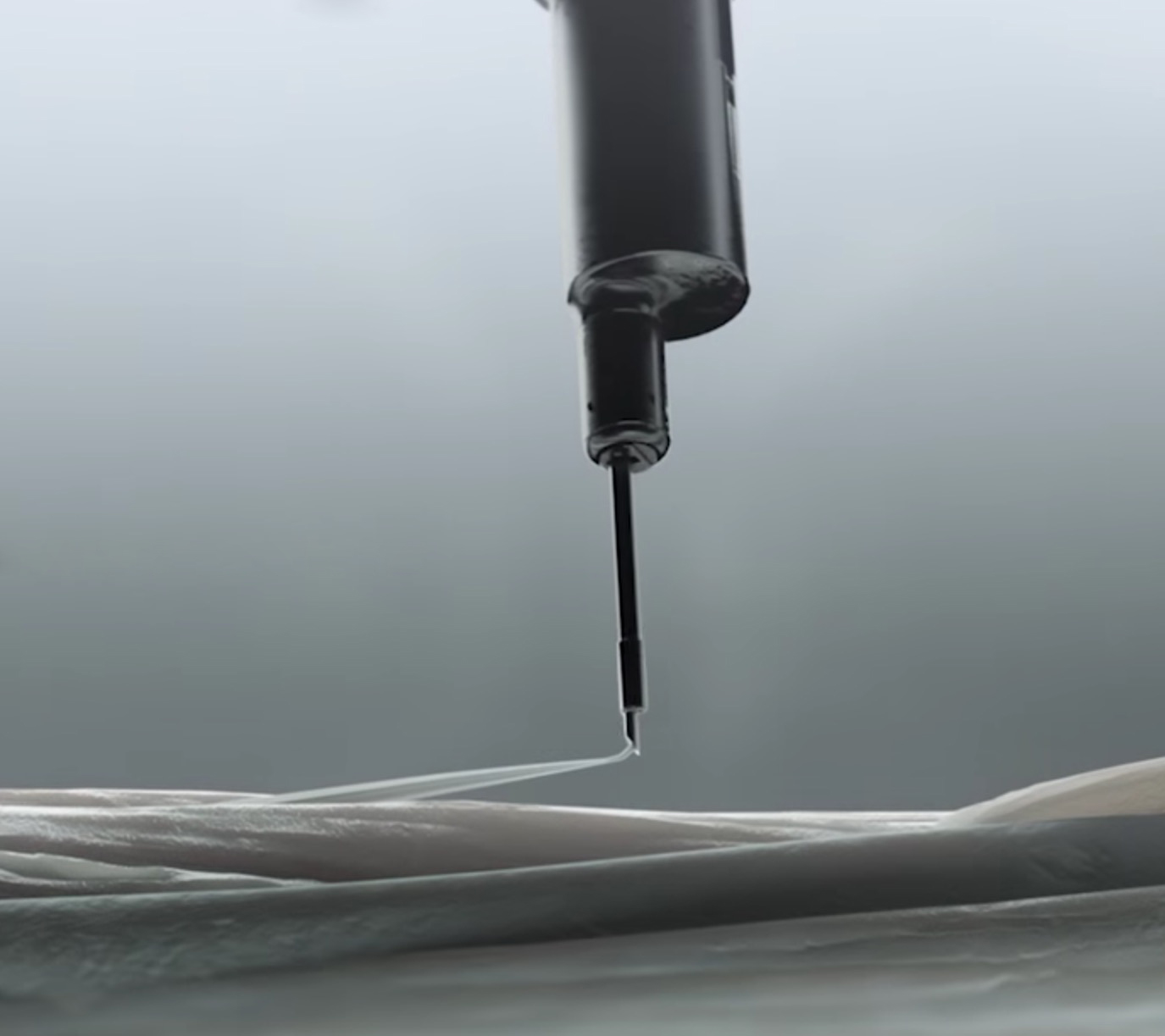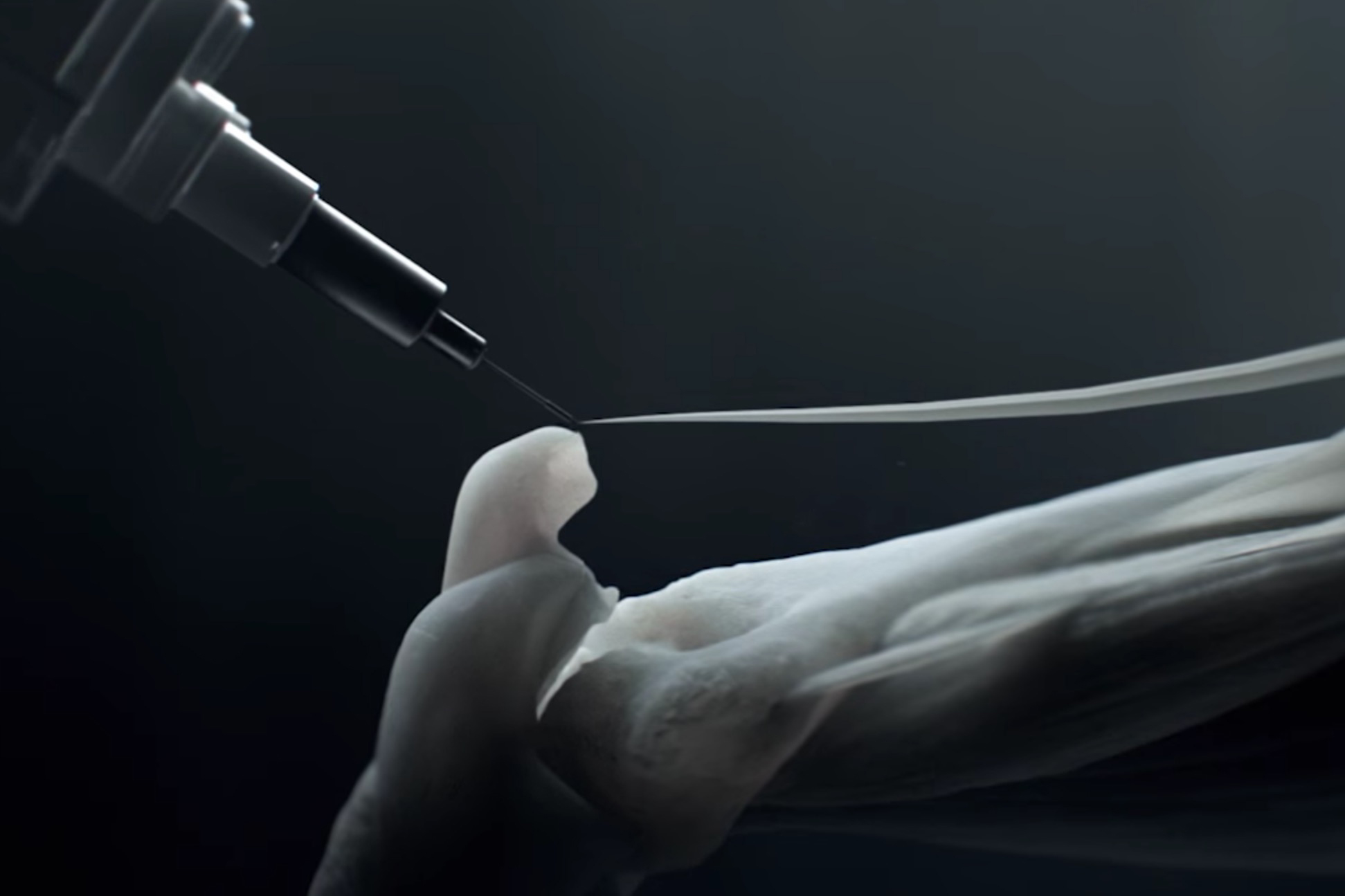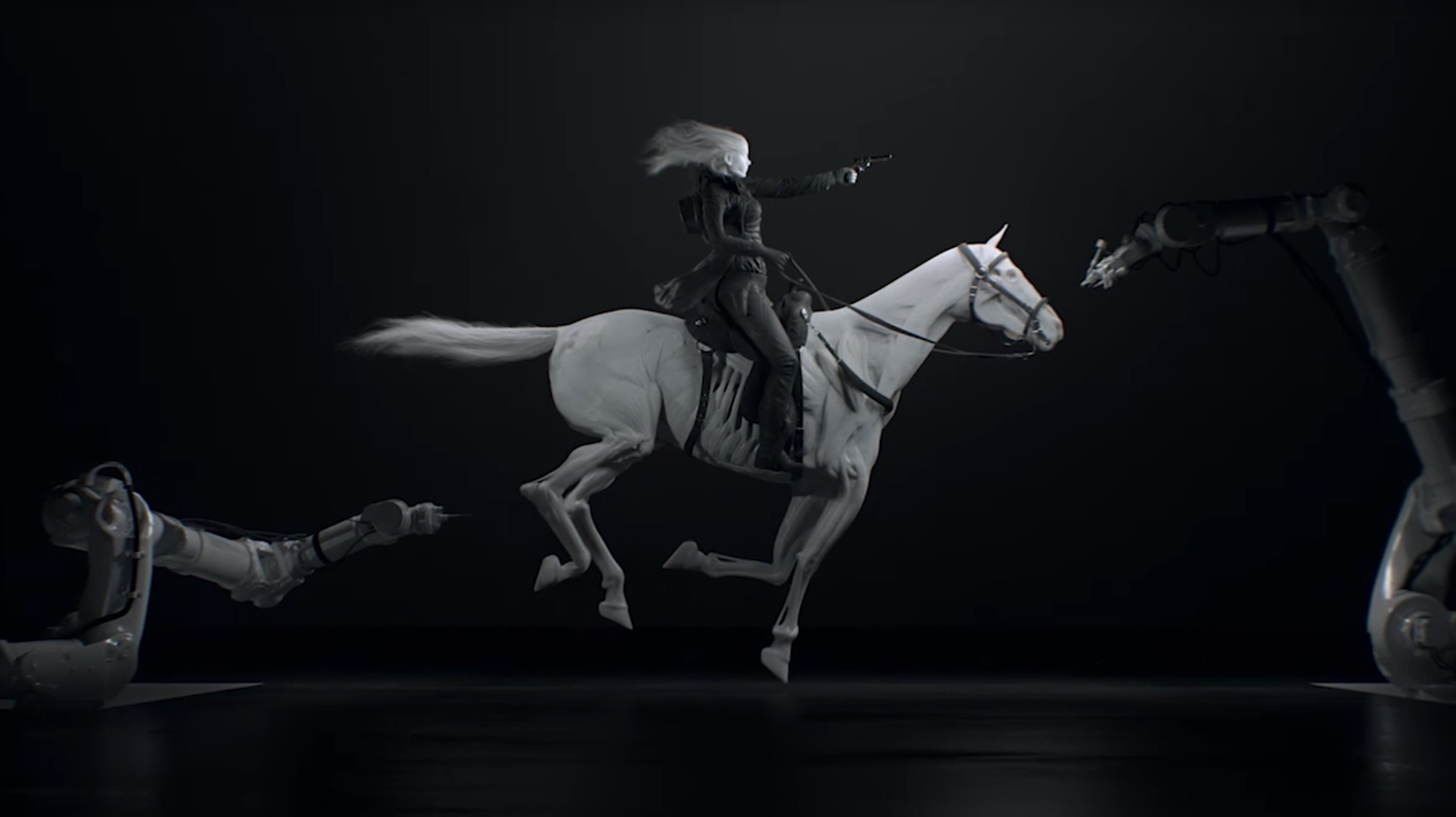
Have you watched the new HBO series, “Westworld”? If you have, the opening sequence features a very unusual 3D printing process.
The series reprises the 1960’s version of Michael Chricton’s novel, “Westworld”, in which an amusement park is filled with highly realistic humanoid robots that act out a fantasy world, such as the “Wild West”.
In the original movie and the more recent HBO series, the robots run amuck and cause bad things for the humans involved, because, as we are continually told by Hollywood, that all technology is bad.

However, the HBO series makes the robot concept a bit more realistic by involving 3D printing. Watch this official video of their opening sequence:
You’ll see how robot arms operate extruders that produce what appears to be the muscles of the robots. You’ll see micro-3D printer mechanisms print an eye.
It all seems quite plausible, if only for one thing: what is the material?

That’s the rub: 3D printing is partly about motion systems that position the deposition / fusing mechanism and a whole lot more about the material. I’ve long thought that the grand future of 3D printing depends greatly on the development of unique, 3D printable materials offering physical properties vastly beyond today’s rudimentary plastics and metals. Here HBO portrays a vision of what might be: a material that’s not only flexible, strong and durable, but one that’s “active”, in that it can be controlled remotely through the robot’s control subsystems.
If such a magic material actually existed, it would be usable in a huge number of applications. I can imagine producing, for example, ladders that push you up and down, or chairs that arrange themselves around a table, or clothes that wrap around you for the perfect fit, or, well, you get the idea.
We may not have that material available today, or even in the near future, but for now we do have the HBO Westworld series.
And it’s pretty good, too.

